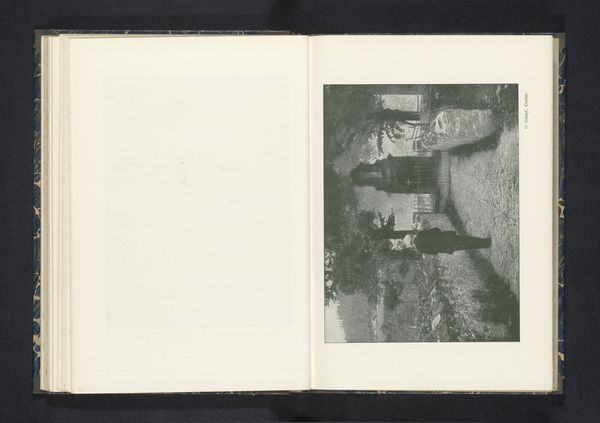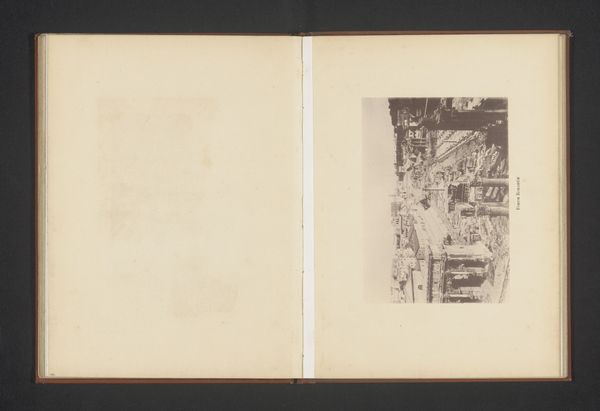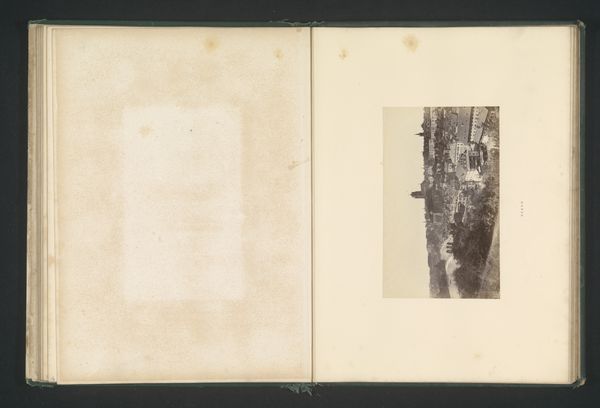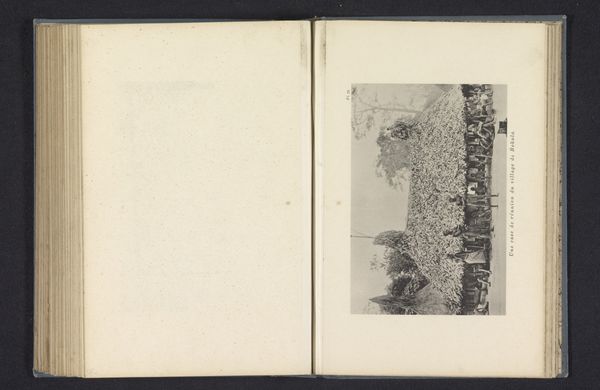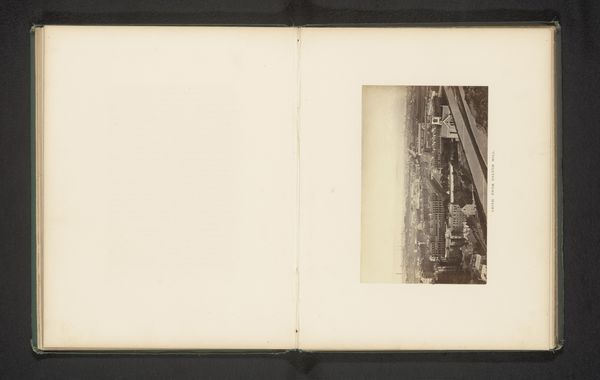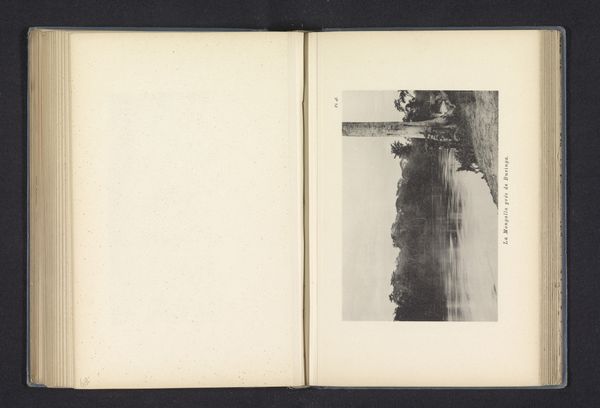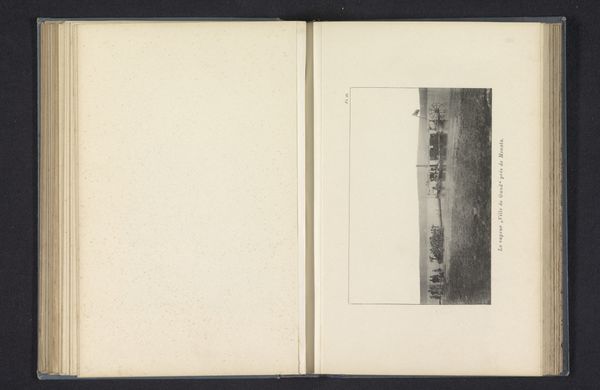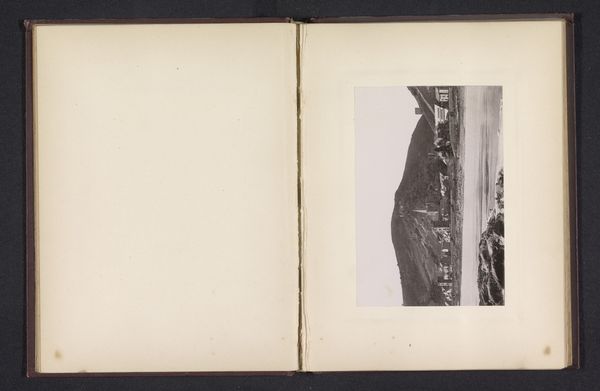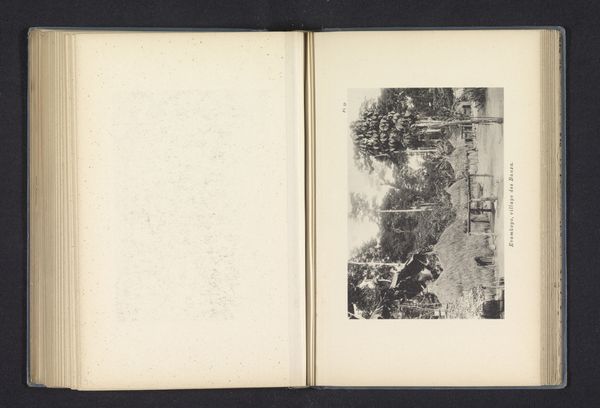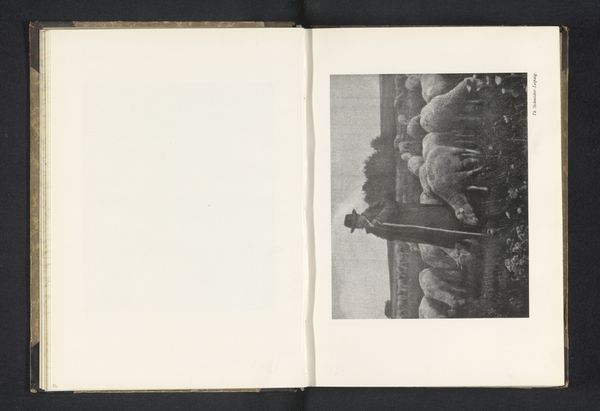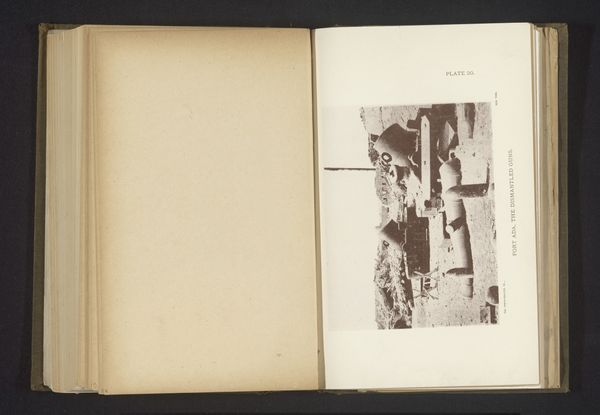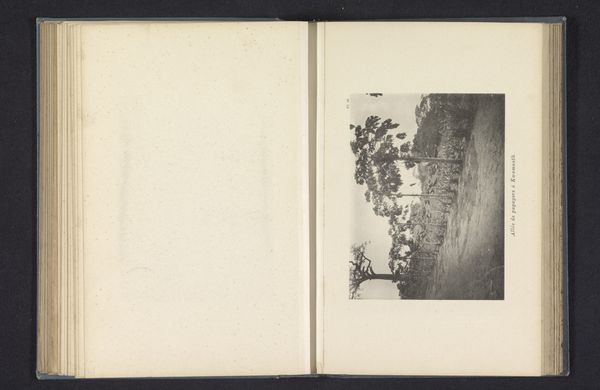
#
aged paper
#
homemade paper
#
paperlike
#
paper texture
#
fading type
#
mountain
#
thick font
#
white font
#
thin font
#
historical font
#
small font
Dimensions: height 117 mm, width 166 mm
Copyright: Rijks Museum: Open Domain
Curator: What a find! This is an intriguing, undated piece called "Gezicht op de Pilatus-berg bij Luzern"—or "View of Mount Pilatus near Lucerne." It's estimated to have been created before 1898. Editor: My first thought is that it has such an ephemeral quality to it. The tones are muted, almost ghostlike, which gives a feeling of faded memory. And it looks like it's a photograph, presented within the pages of an album or perhaps even a journal. Curator: Absolutely. Given the historical context, consider how landscape photography became a vital tool for promoting tourism and shaping national identity. Reproductions like this spread the visual vocabulary of sublime nature to wider audiences, further fueling idealized representations of sites. The mountaintop view is classic. Editor: I agree. It’s easy to consider this artwork beyond its aesthetic attributes. Let’s focus on its materiality, its existence as a fragile, potentially homemade paper, which carries considerable weight. What kind of labor was involved? And what was the mode of its production and dissemination? Curator: I think the mode of consumption speaks to the late 19th-century interest in collecting travel memorabilia. We've moved away from unique painted souvenirs to mass-reproduced, reproducible photographic images. These photographs functioned as markers of personal experiences while also reinforcing culturally-constructed notions of picturesque destinations. Editor: True! The paper's aging further enriches it. The marks of time tell a story about the object's existence, the materiality speaking of environmental changes, modes of storage, and past ownership. The image transforms itself, subtly moving its representation and experience over time. Curator: A fascinating point. Now, turning our thoughts again to the image of Pilatus, one can analyze how the majestic, dominant mountain figure represented a source of national pride or was perceived as a place of spiritual or artistic inspiration. The composition itself—with its subdued details—is certainly geared toward stirring such emotions. Editor: So, in closing, this piece provides a rich case study. It’s a reminder that visual documents exist not as isolated representations of places, but as intricate products of specific cultural, political, and economic circumstances. Curator: Precisely! A landscape imbued with social meaning through the very act of its production and display, transforming an aesthetic artifact to historical commentary.
Comments
No comments
Be the first to comment and join the conversation on the ultimate creative platform.
